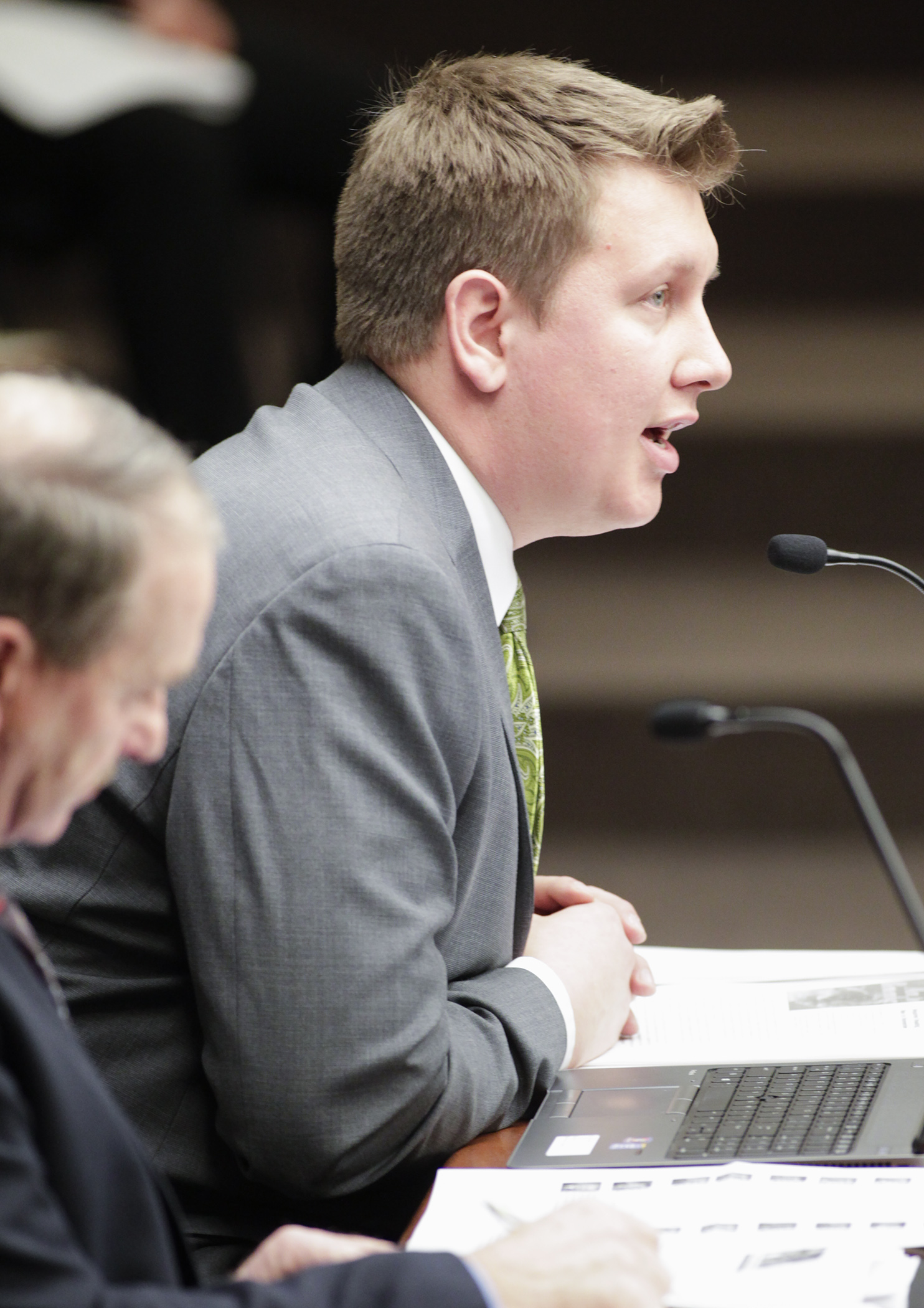Dairy farmers could have hope in the face of loss
The last several years have been tough for dairy farms, with continued losses prompting some farmers to call it quits. But the addition of risk management options in the 2018 federal farm bill is playing into industry forecasts for growth – both in the number of cows and the number of producers handling milk and creating value-added products.
“The question is can Minnesota have more cows? I think the answer is easily yes,” Lucas Sjostrom, executive director of the Minnesota Milk Producers Association, said after noting the number of dairy cows in the state has fallen to around 450,000 in 2018 from a high of 1.8 million in 1945.
“We can grow back to those numbers … and I believe it is good for water quality,” he told the House Agriculture Food and Finance and Policy Division Tuesday morning. “If we can use fertilizer produced here and grow crops with that instead of fertilizer brought in from elsewhere, that will be a net benefit for our environment.”
 Lucas Sjostrom, executive director of the Minnesota Milk Producers Association, briefs the House Agriculture and Food Finance and Policy Division on the 2018 federal farm bill’s impact on the state’s dairy industry. Photo by Paul Battaglia
Lucas Sjostrom, executive director of the Minnesota Milk Producers Association, briefs the House Agriculture and Food Finance and Policy Division on the 2018 federal farm bill’s impact on the state’s dairy industry. Photo by Paul BattagliaSjostrom went on to explain the farm bill included a provision for dairy farmers to enroll in the crop insurance program. That option did not exist before.
He said that looking back at three years in which losses were the norm, insurance would have aided dairy farmers significantly and could potentially have mitigated the current spike in farmers retiring or selling out of the industry.
Farmers choosing to exit generally wait for high dairy prices, when their assets hold greater value. But after three years of loss, the number of exiting farmers in Minnesota climbed to nearly 10 percent in 2018. That percentage averaged around 4 percent between 2015 and 2017.
That is a significant given the dairy industry directly impacts around 1 in 30 jobs in the state, Sjostrom said.
Increasing exports and value-added dairy can offset the negative impacts of low commodity market prices in the long term, he said. That makes renegotiating or reinstating trade deals to mitigate tariffs important.
“We have a large national stockpile, people think its government cheese, but it’s not, it’s a large privately held stockpile of cheese right now,” Sjostrom said.
That stockpile is due largely to tariffs and renegotiations of the North American Free Trade Agreement. Milk is more easily stored as cheese, but as the stockpile grew, prices eroded.
The recently negotiated United States-Mexico-Canada Agreement is expected to re-open the Canadian milk market in a limited manner and stabilize trade with Mexico.
Rep. Rod Hamilton (R-Mountain Lake) asked how to bring more dairy cows to the state, and if regulatory issues are a problem.
Association President Dave Buck acknowledged that permit expenses for processors can be prohibitive.
“It’s always a challenge. … Sometimes regulation is not based on common sense,” Buck said. “In the last 10 years, my perspective is that it has improved, and I hope, continues to improve.”
Sjostrom echoed Buck. “Some of it is perception. I think we are perceived as a difficult regulatory state. I don’t think all of that is true and I think there are little things we can do.”
There is still a need for the state to match the focus on customer service with rules and regulations relating to actual costs, according to Sjostrom. If that is done, he believes the state will look more welcoming to incoming dairy industries.
Sjostrom also suggested the state look at four specific efforts to help stabilize dairy farms in 2019: enhance environmental benefits through stewardship practices; support federal insurance purchases; include the so-called “Grain Glitch” in the tax code section 199A in the conformity bill; and enhance the Livestock Investment Grant program.
Related Articles
Search Session Daily
Advanced Search OptionsPriority Dailies
Ways and Means Committee OKs proposed $512 million supplemental budget on party-line vote
By Mike Cook Meeting more needs or fiscal irresponsibility is one way to sum up the differences among the two parties on a supplemental spending package a year after a $72 billion state budg...
Meeting more needs or fiscal irresponsibility is one way to sum up the differences among the two parties on a supplemental spending package a year after a $72 billion state budg...
Minnesota’s projected budget surplus balloons to $3.7 billion, but fiscal pressure still looms
By Rob Hubbard Just as Minnesota has experienced a warmer winter than usual, so has the state’s budget outlook warmed over the past few months.
On Thursday, Minnesota Management and Budget...
Just as Minnesota has experienced a warmer winter than usual, so has the state’s budget outlook warmed over the past few months.
On Thursday, Minnesota Management and Budget...